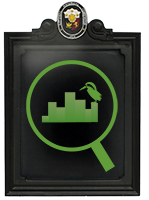 Pandan Sea Port; Pandan Port
Pandan Sea Port; Pandan PortPandan Sea Port; Pandan Port is a Registered Property, Municipality of Caoayan, Ilocos Sur located at Caoayan, Ilocos Sur, Region I.
Before the conquiestas of the Philippine Islands, there were major ports in the archipelago--- the ports of Cebu, Manila and Caoayan in Vigan (Puerto de Vigan, Pandan).
The port of Caoayan was a cradle of civilization especially in trade and commerce in the long years before the arrival of Spaniards. It continued as such during the Spanish colonization of Ilocandia until the American occupation.
Before the Spaniards ever set foot in Caoayan at sundown on June 12, 1572, Ilocos was already a center of trade and commerce especially at Pandan, Caoayan, Ilocos Sur.
Whenever the Chinese traders arrived at nightfall, they would no longer proceed to Manila City but instead, entered the port of “Los Ylocos” and unload their commodities and entrust them to the “Sanglays” or Chinese Mestizos of Vigan and to the natives. It was a good opportunity and privilege among the Caoayeños and Bigueños.
The Sangleys (Chinese) and Japanese traders were the first to dock at the Pandan port in Caoayan and Agoo in La Union unloading fine silk jars and porcelain plates across the sea. Here also exited Abel (hand woven Ilocano cloth), alig (beeswax), diro (honey) and balitok (gold) --- products of the Samtoys, the Itnegs, and Igorots.
The port of Pandan was very useful to the lives of the people in the ancient Ylocos because it prolonged the sustenance of their living as such of that continuous trade and commerce that happened between Filipinos and other races.
The port has been one of the final docking points of sailboats from one of the Biray ports located at the south of PantayTamurong Island which navigated in the Butao River (estuary) going to Fuerte (Puerto). Sailboats (goletas), birays, pontings (pontines y pancos) --- vessels which range in sizes that plied the rivers and sea serving in commerce and industry as well as bridge between the Samtoys and other races in the olden days. These small sailing vessels travelled from Caoayan to Aparri, Cagayan, Agoo, La Union, Pangasinan, Manila, Zambales, and other places it could reach. Even the galleon ships plied this port to Manila to Acapulco, Mexico loaded with tobacco.
Another major industry that was centered in Caoayan including the Vigan harbor was the building of boats or the so called “boat industry” like pontines y pancosfor coastal services as well as sailboats (goletas).
This industry was eased out as means of transportation with the onset of modern highways especially those connecting the Ilocos provinces to Manila and Cagayan.
Another event was when the Seven Sisters of St. Paul of Chartres led by Mother Marthe de St. Paul and Sr. Josephine Rappeport landed on 5 June 1905. They were welcomed by His Excellency Dennis Joseph Dougherty, the Bishop of Nueva Segovia, together with the young ladies of Vigan.
The port of Pandan is indeed very important in the history of Caoayan and Ylocos because it has witnessed the transitory events in the province and had contributed a rich and colorful history in the establishment of Ciudad Fernandina de Vigan, now, the famous World Heritage and Wonder City of Vigan.
This site, the ancient port of Ylocos region and its saga will remain vivid in the memories of the people. It has much significance for it has carved in the timeline of Caoayan, Ilocos Sur and Philippines respectively.